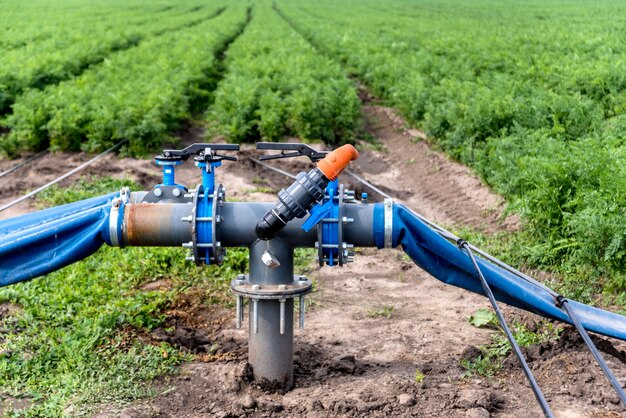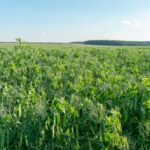Setting up an efficient farm irrigation system is crucial for ensuring that crops receive the right amount of water at the right time. With the right equipment, farmers can reduce water waste, improve crop yields, and conserve resources. Here’s a guide on the essential equipment you need to set up a farm irrigation system.
1. Water Source
The first step in setting up an irrigation system is identifying a reliable water source. This could be a well, river, reservoir, or even municipal water supply. Ensure that your water source is sustainable and provides enough water to meet the needs of your farm. Consider factors like water quality, access, and cost when choosing your source.
2. Pipes and Tubing
Pipes and tubing are essential for transporting water from the source to the crops. The size and material of the pipes depend on the type of irrigation system you choose. Common materials include PVC, polyethylene, and galvanized steel. For larger farms, you may need mainlines to carry water to different parts of the farm, with laterals branching off to distribute water to individual fields.
3. Pump
A pump is often required to move water from the source to the farm, especially when gravity isn’t sufficient. The type of pump you need depends on the water source and the size of your irrigation system. Common types of pumps include centrifugal pumps, jet pumps, and submersible pumps. Be sure to choose one that suits the pressure and flow rate requirements of your system.
4. Valves
Valves regulate the flow of water and allow you to control when and how much water is delivered to your crops. Different types of valves are available, including manual valves for simple systems and automated valves for more advanced setups. Automated systems can be programmed to operate at specific times, improving efficiency and minimizing labor costs.
5. Drip Irrigation Tubing or Sprinklers
The method of water delivery depends on your farming needs. Drip irrigation is a highly efficient system that delivers water directly to the roots of plants, minimizing evaporation and runoff. It requires tubing, emitters, and connectors to deliver water at a slow, consistent rate.
Sprinklers, on the other hand, mimic natural rainfall by spraying water over a wide area. They are ideal for larger fields or crops that require more water coverage. There are various types of sprinklers, including stationary, rotating, and traveling sprinklers, each designed for different applications.
6. Filters
To prevent clogging of drip emitters or sprinkler nozzles, filters are essential. They help remove debris and particles from the water before it reaches the irrigation lines. There are various types of filters, including screen filters and disc filters, which are effective at keeping the system clean and operational.
7. Fertigation System (Optional)
For farms that require nutrient delivery along with water, a fertigation system can be integrated into the irrigation setup. This system allows you to mix fertilizers or other nutrients directly into the irrigation water, ensuring that your crops receive essential nutrients in an efficient manner.
8. Timer or Controller
An irrigation timer or controller is necessary for automating your irrigation system. This equipment allows you to schedule irrigation cycles based on the needs of your crops. Modern controllers can be connected to weather stations, soil moisture sensors, and even smartphones, making it possible to adjust irrigation schedules based on real-time data.
9. Soil Moisture Sensors
To optimize water use, soil moisture sensors can be installed to measure the moisture content of the soil. These sensors help you determine when and how much to irrigate, preventing overwatering or underwatering. They can be integrated with automated irrigation systems to trigger watering only when the soil is dry enough to need water.
10. Backflow Preventers
A backflow preventer is essential for protecting your water source from contamination. It ensures that water doesn’t flow back into the water supply system, which could introduce pollutants into your water source. This is especially important if you’re using chemicals or fertilizers in your irrigation system.
Setting up an irrigation system involves choosing the right equipment to meet the specific needs of your farm. With the proper tools, such as a reliable water source, pump, pipes, valves, and sprinklers or drip systems, you can ensure efficient water usage and healthy crop growth. Incorporating automation and monitoring systems like timers, controllers, and soil moisture sensors can further enhance the system’s effectiveness, saving you time, money, and resources in the long run.
Join 'Farmers Mag' WhatsApp Channel
Get the latest Farming news and tips delivered straight to your WhatsApp
CLICK HERE TO JOIN






